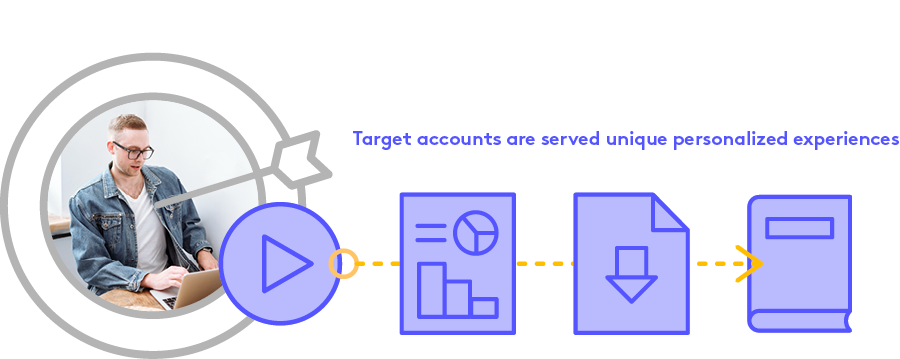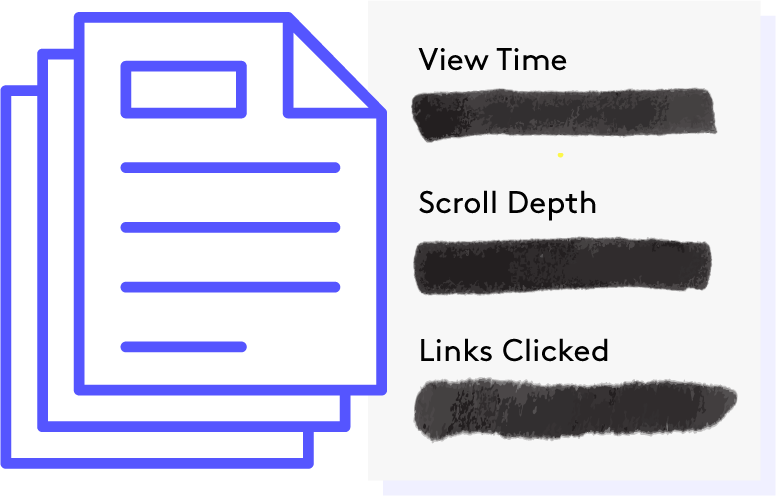Let’s Get Personal: Why Your ABM Program Needs Content Intelligence

Account-Based Marketing (ABM) can have a lot of moving parts, and an end-to-end ABM program can mean a lot of investment operationally and organizationally to ramp up. Ideas around target accounts and sales/marketing alignment isn’t new. In fact, most companies are already using tried-and-true ABM tactics for lead gen—and have the results to prove that it works. But if you’ve taken a stab at launching all the usual suspects like direct mail, high value offers, and omni-channel marketing, it’s time to start thinking about how becoming more content intelligent can give your ABM strategy the boost it needs.
The first step in ABM is to identify a list of target accounts—but identification can be a blind spot if not done effectively. If you know the accounts you’re targeting, you can serve up personalized content that is relevant to factors like the account’s industry, the type of product they have, and their stage in the buying funnel. You can take a 1:many approach, where you’re targeting multiple accounts in the same industry with the same content, or a 1:1 approach which is more of a bespoke content experience you’re creating for a single account. In either case, your insights stop at the account-level, and you have very little recourse if your prospective customers come to your site, read a piece of content, and leave without telling you who they are. In these cases, you risk missing high-quality buyers because you don’t have the technology to convert your unknown visitors to known visitors. That’s where content intelligence platforms like PathFactory come in.

Content intelligence helps organizations provide a personalized content experience to target accounts. This personalization creates more bingable experiences and leads to conversions—releasing you from the pit of the unknown. PathFactory’s AI-powered content recommendations allow you to:
- Serve up the right content on the right channel at the right time in the buyer journey, making it easier for visitors to find the information they need to make a purchase decision
- Convert unknown visitors to known engagers with tracking, AI, and analytics
- Enable your sales and marketing teams to access the same data and align on prospect messaging
- Level up your post-sales and customer marketing by keeping track of the content they’re consuming
Account-Based Marketing (ABM)
According to Gartner, ABM is a go-to-market strategy targeting certain accounts with a synchronized, continuous set of marketing and sales activities. With ABM, instead of casting a wide net, a B2B marketer gets intentionally selective about focusing on leads or accounts that have a high chance of conversion. ABM campaigns normally take three approaches
—
Content intelligence is the oil that keeps your ABM machine moving

At its most basic level, an ABM program provides a personalized experience to an account or individual through relevant content. But we don’t want ‘basic’. With countless platforms and technologies that help you bring your A-game it’s easier than ever to get actionable insights about the people who are engaging with your marketing channels. Adding content intelligence into the mix allows you to make data-driven decisions about:

The accounts you should be targeting
Using data and content engagement insights, you have a line of sight into what accounts are engaging with your content and what stage of the sales funnel they’re in. You can use this information to create your target accounts list, or follow along their buyer journeys once they’re known to you.
The individuals you should be expanding your relationships with
Typically there are multiple people on every B2B buying committee. Use data to find out who’s engaging with your content the most (and the least) so you know who you should reach out to, and what topics are most relevant.
The prospective buyers you should be engaging
Find out what channels and content types are doing the best job converting your unknown visitors into known visitors. Are people consuming e-books more than webinars? Are your visitors coming from a LinkedIn ad or a search engine? The type of content your visitors consume as well as how they found you will help you understand how to best communicate with them in the future.
When it comes to ABM success metrics, it’s quality over quantity

Let’s say you’re running an ABM campaign that starts with an email to a prospective customer. This email includes a link to download a really interesting PDF. After your campaign wraps, you take a look at the analytics and find that 25% of people who received the email downloaded the PDF. That’s great news for you… assuming the campaign only cared about vanity metrics.

In an ABM campaign, resist the urge to link to a static PDF. We get it: they look great and are easily shareable, but unless you have supporting technology that can track engagement on it, they’re black boxes. They don’t give you insight into factors like how long someone spent on the PDF, how far down they scrolled, and if they clicked any of the links. By using PDF downloads as a success metric, you’re only scraping the surface of the engagement that could have happened. Not to mention it was a one time experience for the buyer; a dead end.

Without content intelligence you only know that they downloaded your PDF, you don’t know if they read it.
Instead, when you’re thinking about how to measure the success of your ABM program, consider these four factors:
Content consumption: average time spent, number of assets viewed, binge rate
Are your prospects spending time consuming your content, and are they searching out more of it? Are they reading a blog post and then watching a webinar, or are they abandoning your website? Looking at metrics like PathFactory’s ‘binge rate’ (which tells you how many people are consuming more than one asset in a single visit) will help you learn who your audience is and how engaged they are.
Relationship strength: customer retention, upsell rate, NPS
The very ethos of ‘account-based’ anything is that it’s focused on serving the account. By building your relationship with your target accounts, you’re able to deepen your engagement with them, as well as keep tabs on things like how satisfied they are, what solutions they’re looking for, and how they use your product.
Sales and marketing alignment: SQL, MQL, win rate
Your sales and marketing orgs should be using the same data, speaking the same language, and working towards the same goals. As a united front, these two teams can create high-impact integrated campaigns focused on customer engagement.
Revenue: LTV, YoY growth, pipe gen
Increasing revenue is the reason why we’re doing all this in the first place, right? By taking the above three factors into account, you’re on your way to seeing revenue growth. Content intelligence can help here, too, through things like a ‘Fast Moving Buyer’ alert, which is an email notification a sales org receives when a prospect is consuming content quickly and showing sales readiness signals.
ABM in action

Whether you’re just launching an ABM model, or looking for ways to innovate on your current strategy, PathFactory helps companies at every stage. When you commit to an ‘account based’ focus, leverage the right solutions to make your efforts effective and scalable. Look for tools that:
- Integrate with a marketing automation platform (MAP) such as Marketo, Eloqua, Pardot, and Hubspot to keep track of your prospects and customers
- Help you understand which accounts should be targeted and if they are ‘always on’ volume accounts or ‘white-glove’ accounts
- Further engages prospects with email, webinars and other virtual events, and personalized website experiences
- Allow you to group your target content into 1:many (industry), 1:few (accounts), and 1:individual (buyer persona) targeting
A good ABM program uses data and customer insights to provide a deeper understanding of who your target accounts should be, and how you can reach them. Since a large part of the buying process is filled with content, the best way to get in your buyer’s head is to become more content intelligent—and PathFactory can help.


